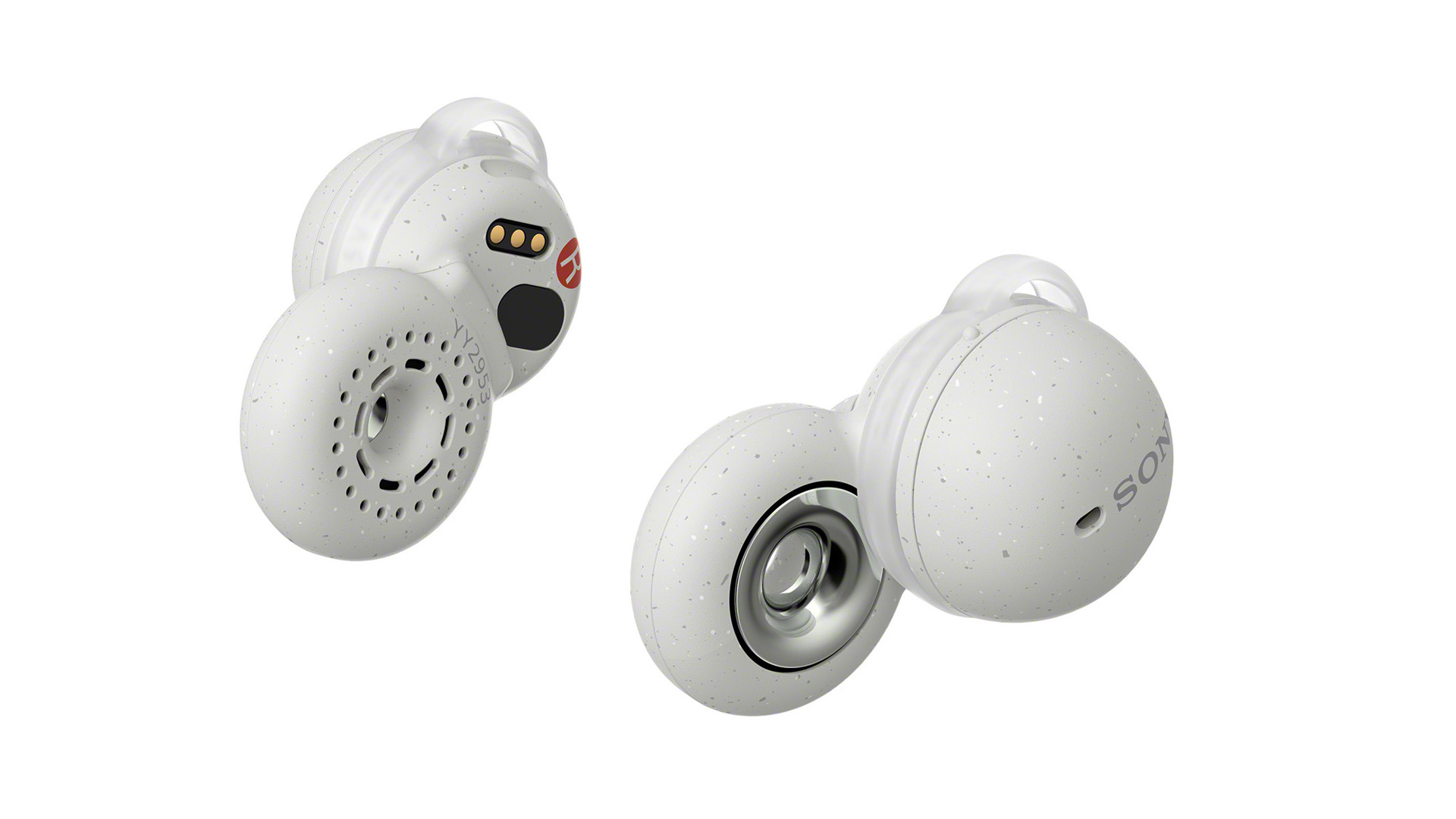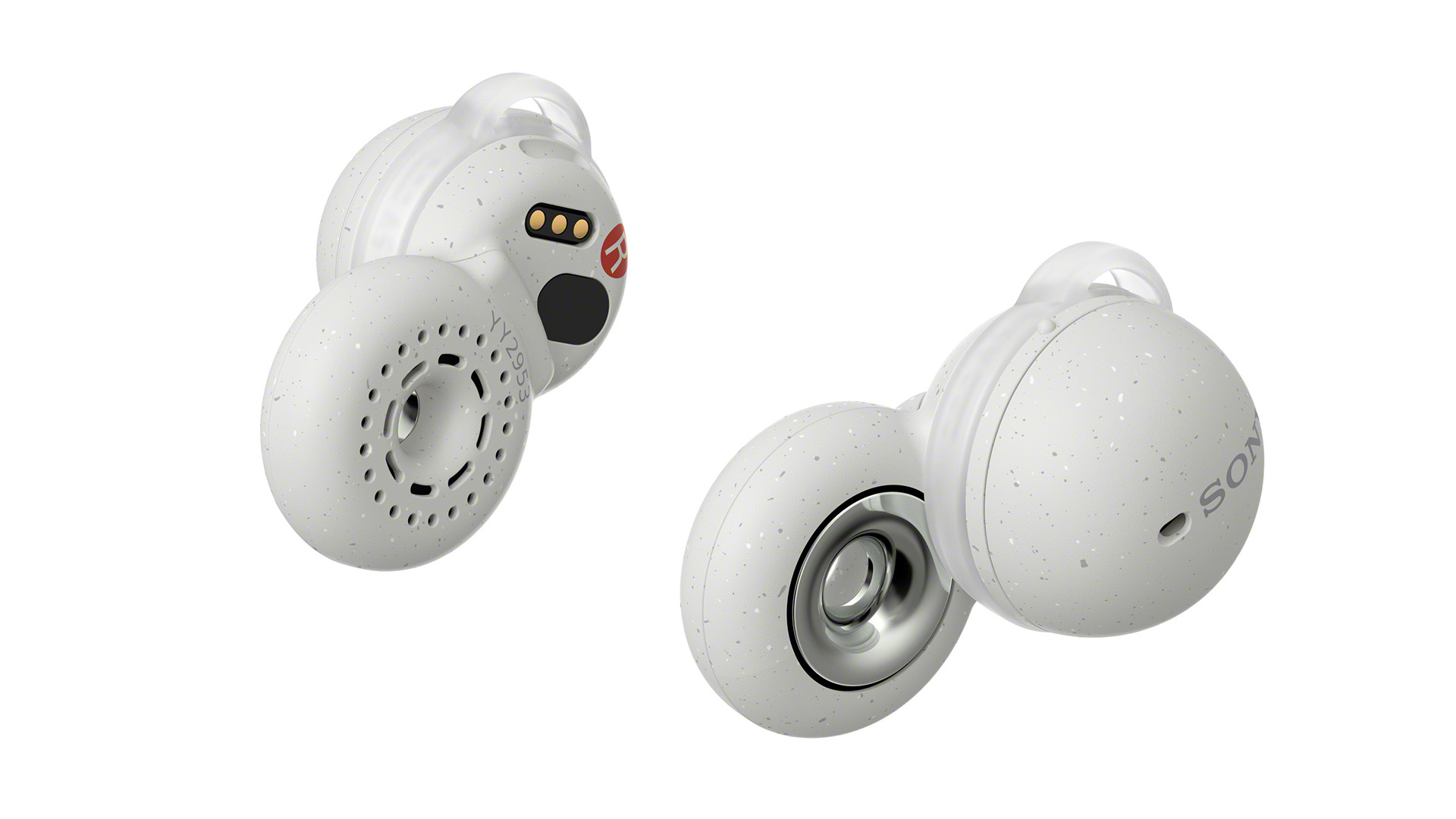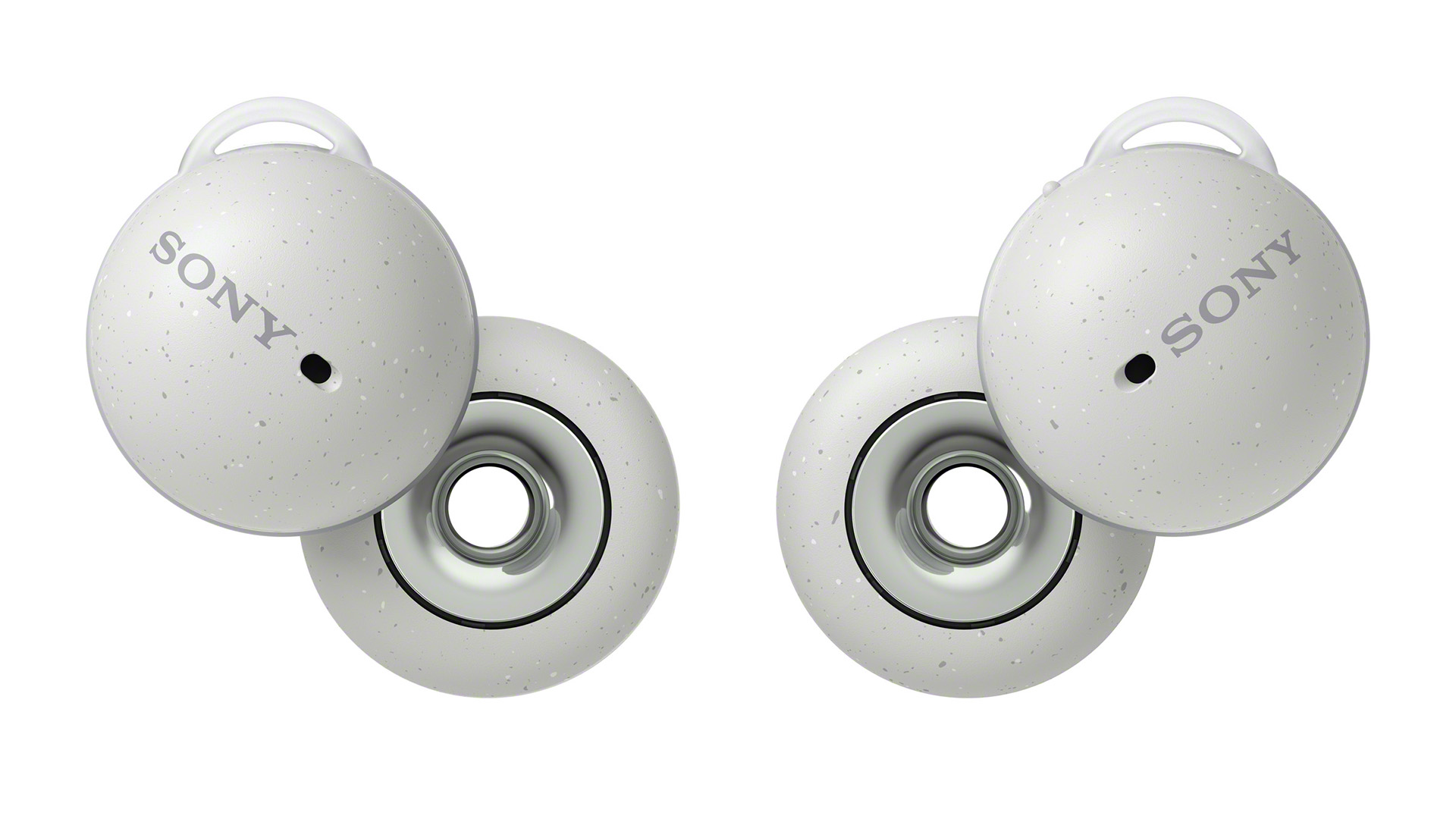What Hi-Fi? Verdict
Sony’s LinkBuds deserve a round of applause for their clever design and for offering a different flavour of sound that many will find appealing
Pros
- +
Balanced, natural sound
- +
Open and spacious presentation
- +
Lightweight and comfy
Cons
- -
Sound lacks drive and dynamics
- -
Ordinary battery life
- -
No wireless charging
Why you can trust What Hi-Fi?
Despite the fact that wireless earbuds seem to dominate the headphones market, not everyone likes them. Some users find them too intrusive, too isolating, and would rather listen to music played out of a smartphone’s speaker than have to insert one bud, let alone a pair.
But, help might be at hand courtesy of the brand new Sony LinkBuds (aka Sony WF-L900), which offer a twist on the traditional wireless earbud design that we have all come to know and a lot of us have come to love.
Price
The Sony LinkBuds come in at £150 / $180 / AU$300 which positions them above Sony’s cheaper WF-C500 earbuds and below the premium WF-1000XM4. Rivals such as the Shure Aonic Free are closer in price although, like the Sonys, they don't offer noise cancelling. The five-star JBL Reflect Flow Pro do offer ANC and can be had for similar money but like the Shures, they're a more traditional design.
Design

Given the size of the average pair of wireless earbuds, you wouldn’t think there’s much room to experiment with a brand new design. Having said that, it didn’t stop Samsung launching the kidney-bean-shaped Galaxy Buds Live, even if they weren’t the final word in sound quality.
Now it’s the turn of Sony and its LinkBuds to bring something different to the party. Just a quick look at the design is enough to raise eyebrows. Instead of a tip protruding from the earbuds there is a circular section with a hole in the middle. It looks a bit like a smoothed-off Polo Mint (or Life Saver for our American friends), but it won’t keep your ears feeling minty fresh.
It’s actually the big USP of these wireless earbuds – a 12mm ring driver, designed to slide into the bottom part of your ear from where it fires music out into your ear’s opening. Think of the old-school in-ear headphones you used to get with Sony CD Walkmans back in the ’90s, stamp a hole in the middle and you’re not far off it.

Bluetooth 5.2
Noise-cancelling No
Battery life 5.5 hours (plus 12hrs from case)
Voice control Google Assistant, Amazon Alexa
Finishes x2
Weight 4.1g (x2)
Those of you who hate the feeling of silicone or memory foam burrowing into your ears will be delighted to learn Sony has deliberately designed the LinkBuds to not do this (though the newer LinkBuds S have returned to that conventional design). Quite the opposite, in fact. Sony wants you to be able to hear the outside world instead of isolating yourself from it – which is also the main reason there’s no noise cancelling (ANC) present.
The latest hi-fi, home cinema and tech news, reviews, buying advice and deals, direct to your inbox.
Given there’s a lot going on with the design, it’s impressive that the LinkBuds are actually so small. They make something like a pair of Bose QuietComfort Earbuds look positively huge. Sony claims they use 51 per cent less volume than their own highly rated WF-1000XM4 headphones. They’re 44 per cent lighter, too – something you really notice when one is sat in the palm of your hand.
The Sony LinkBuds are available in either grey or (like our review sample) white. We’re big fans, as the plastic used feels nice in-hand. It’s actually made from Acrylonitrile Butadiene Styrene (ABS), a material formed by taking certain car parts made in the US and Japan, recycling and refining them and blending them with mica to get that final finish.
Comfort

So the design looks striking enough, but are the Sony LinkBuds comfortable? In a word, yes. Over long listening periods we had no real complaints, with the ring driver resting gently in but not digging into our ear. Similarly, the actual bud section of the WF-L900 nestles neatly in the upper part of your ear, secured in place by a small plastic earloop (Sony’s accompanying Headphones app offers a helpful video to show you how they’re supposed to sit).
The loops are smaller than the rubber wingtips you get with some rivals, and Sony gives you five different sizes to choose from (XS, S, M, L and XL). If you want to change the size, simply peel the loop away from around the edge of the bud section and replace it with your loop size of choice. It’s a very simple procedure.
Features

The ring driver will dominate many conversations about the Sony LinkBuds, but the brains of the operation, including the DAC and amplifier, sit in the main domed section. The WF-L900 use the same Integrated V1 processor that you can find in Sony's Award-winning WF-1000XM4. They also call upon Sony’s DSEE (Digital Sound Enhancement Engine) technology to help restore high-frequency sounds lost in compressed digital audio files.
Sony has focused heavily on call quality for the LinkBuds, too. They feature something called Clear Call with AI, a noise-reduction system designed to reduce outside interference. And call quality is a real highlight here. Your voice sounds clear and focused and the tech combines with the built-in mics to make it easy for the person on the other end of the line to hear what you’re saying.
As is the case with most Sony wireless headphones, you’ll want to download the company’s Headphones app to help you make the most of the features on offer. Some are new, such as the nine different preset EQs you have access to, and some have been carried across from the pricier WF-1000XM4.
Speak-to-Chat is one feature that’s made it across, for example. It automatically stops the music when you start talking and resumes it when you stop. You can adjust sensitivity in the app so the tech doesn’t get caught out by random voices or coughs and cause any unwanted pauses. Some might find it useful, although there is a slight delay between you talking and the tech jumping into action. Alternatively, you just remove an earbud to pause playback.
Although Sony has designed the LinkBuds to help blend the outside world into your listening experience, there will be occasions where it threatens to overpower the music you listen to. To help, Sony has added Adaptive Volume Control to the LinkBuds which automatically increases the volume to compensate for any increase in background noise before dropping back to the original volume level. We found it worked okay in practice, but the jumps in volume aren’t especially subtle and occasionally pushed the volume to a level we felt was a bit much given the amount of ambient noise present.
You can also use the app to set up touch controls, but the LinkBuds offer a very different kind of touch control to what you’ll be used to. As standard, you can tap the surface of the main bud to dish out commands such as change volume or skip tracks. But the LinkBuds also offer something called “Wide Area Tap”. The headphones use a special sensor that allows you to control the buds by tapping on the surface of your skin, just in front of your ear. It sounds like a gimmick but it actually works well and extending the tappable area means you don’t need to be quite as accurate with your finger.
Now, one of the knock-on effects of trying to keep the LinkBuds and their charging case as small and as lightweight as possible is the limited size of batteries that can be used. Consequently, you can expect a pretty ordinary five and a half hours per charge, with the case (which doesn’t offer wireless charging) providing backup with an extra 12 hours. It’s not exactly the eight or nine hours we’d like from a pair at this price, but for most people in most circumstances (unless you’re perhaps on a long-haul flight) it should be adequate.
If you’re wondering whether the Sony LinkBuds make for a good pair of running headphones, they do come with an IPX4 rating, meaning they should be resistant to water splashes from any direction. There’s also compatibility with Google Assistant or Amazon Alexa voice assistants and Fast Pair for Android and Swift Pair for Windows to help speed up connectivity.
Sound

With a different style of wireless earbud design comes a different flavour of sound. And you’ll need to take this into account when you first fire up the Sony LinkBuds.
Outside noise has more of an influence; you don’t get the same sense of isolation as you do from more traditional in-ear designs. Initially, low frequencies seem to lack a bit of weight and solidity compared to more common designs. The more you listen, though, the more you realise there is actually enough bass on offer to keep you interested – even if some rivals offer more.
More importantly, the Sonys still maintain a fine sense of balance. Mids and highs don’t stick out and you don’t feel shortchanged by the compromises you have to make.
One big benefit of the ring driver and this more open design is you’re treated to a huge, spacious sound that’s a real highlight and very different from anything you’ll have heard from more intrusive in-ear designs.
Play the orchestral version of Nothing But Thieves’ Impossible (recorded at Abbey Road no less), and the sense of space around the solo guitar and vocal that starts the track is vast.
As the orchestra and drums simmer in the background, the different layers of the track start to build up with each element given plenty of room to breathe. There’s a fabulous natural sense of freedom to the sound which you struggle to get from traditional in-ears.
Sony has also managed to inject the LinkBuds (WF-L900) with its trademark musicality. They’re an undemanding listen and whatever the genre, music never sounds awkward or ill-conceived as the headphones just go about their business.
Detail levels are good for the money, although how much of that you’ll hear can be affected by ambient noise levels. Listen to a delicate, classical piece with just a piano, such as Ludovico Einaudi’s I Giorni and the keystrokes do have to battle with outside noise for superiority and we actually prefer listening to this type of music through the Sonys when there’s no background noise.
Also, the LinkBuds aren’t the last word in dynamic expression. The Shure Aonic Free, for example, have a bit more get up and go and vibrancy in the way they communicate the drive of a track and the emotion of a vocal. If the Sonys could up the entertainment factor a couple of notches, they’d be arguably knocking on the door of that fifth star.
Verdict

So there you have it. The Sony LinkBuds are wireless earbuds for people who don’t like, er, wireless earbuds. Their design is an interesting one that gets around a lot of the problems that conventional in-ears can present. They’re not perfect from a sound quality point of view, but overall there’s still a lot to like and we’re really excited to see where Sony takes the idea in the future.
SCORES
- Sound 4
- Comfort 5
- Build 5
MORE:
Read our review of the newer, more conventional Sony LinkBuds S
Read our review of the Sony WF-1000XM4
Also consider the Shure Aonic Free
Read our Sennheiser CX 400BT review
Best in-ear headphones 2022: budget to premium
What Hi-Fi?, founded in 1976, is the world's leading independent guide to buying and owning hi-fi and home entertainment products. Our comprehensive tests help you buy the very best for your money, with our advice sections giving you step-by-step information on how to get even more from your music and movies. Everything is tested by our dedicated team of in-house reviewers in our custom-built test rooms in London, Reading and Bath. Our coveted five-star rating and Awards are recognised all over the world as the ultimate seal of approval, so you can buy with absolute confidence.

